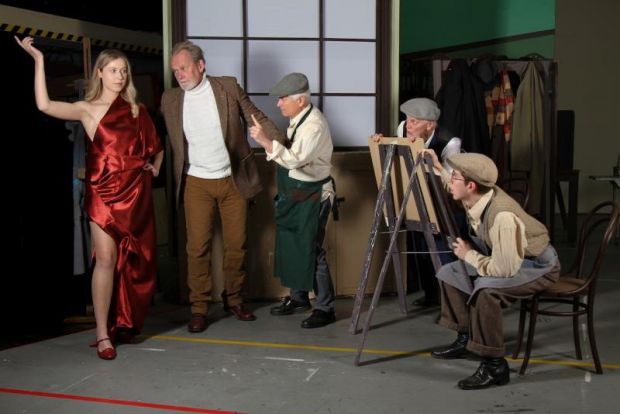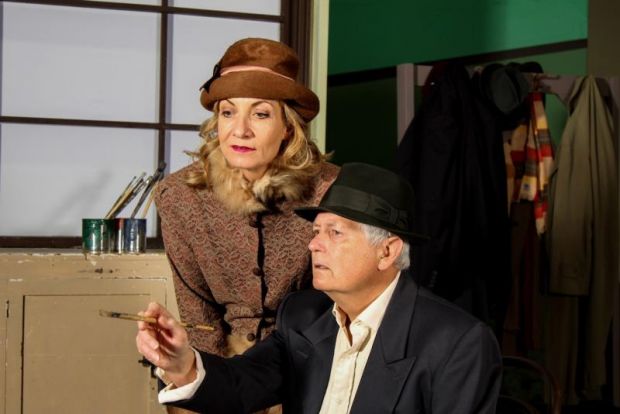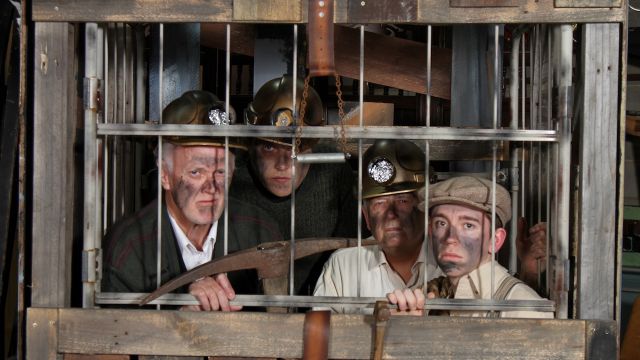The Pitmen Painters
The 2007 play The Pitmen Painters won the 2008 Evening Standard Award for Best Play. Written by English playwright and screen writer Lee Hall, who hails from Newcastle, it is an ode to the talented, often disadvantaged English working class. Hall is best known for writing the screenplay for the 2000 film Billy Elliot, and its book and lyrics as a stage musical. In addition, once again celebrating the talents of humble working people, he penned the screenplay for the 2019 Elton John biopic Rocketman.
This moving and very intentional piece tells a true story, and is set in Ashington, once known as the largest coal mining village in the world. It has much of importance to say about the nature of art, and, like Hall’s other works, explores the inescapable intersections with class and politics. It also captures the common hunger for self-improvement in a society where most boys left school at 12 and were miners at the colliery by 13.
The play tells the true story of the Ashington Group, miners who, despite their lack of formal artistic training, became celebrated artists who had their own exhibitions between 1934 and 1983. Billed as a comedy-drama, skilful director Geoff Britain has sprinkled the comedy lightly, paying attention to the deeply embedded message of class struggle and expectations. Notably, his two wealthy ‘upper class’ characters, played by Anita Canala as heiress Helen Sutherland, and entitled, never had to work Ben Nicholson, played by Nicholas Mitchell, provide a stark contrast to the humble dignity of the coal miners, and both actors create patronising demeanours that are positively teeth grinding.
In casting the Ashington men, Brittain has chosen a diverse and skilled group of players who are completely believable as working class men struggling to better themselves. Jack Robins as one of the founding members, Oliver Kilbourn, stands out portraying a humble, warm and talented man, committed to the principles of the Independent Labour Party, who remains true to the group despite opportunities to be paid to pursue his own art. His interactions with Canala as Sutherland were heartbreaking and his inner struggle was palpable. It is fine acting. Andrew Horwood is Harry Wilson, a dental technician and a man who was gassed and survived the Somme. He plays the hard core socialist who skilfully links every issue to class struggle and his dialogue about metaphors and pictures convincingly draw him as a thinking man. Horwood underplays him and whilst he is rarely given humorous dialogue, he cleverly creates a man of integrity.

The Group began as the Ashington Branch of the Workers' Educational Association and Sam Wiseman as George Brown constantly grounds the group in the extensive list of rules and regulations by which all members had to abide. He is convincingly what was, until Prime Minister Thatcher’s felling of the mining unions, a humble man who stood for and by his fellow members.
Consistently sustaining a Geordie accent is notoriously difficult, and Adam Schultz as Jimmy Floyd achieves that as well as creating a lovable and realistic aspiring painter. His description of his painting of the Bedlington Terrier or the ‘whippet’, as others insist on calling it, is beautifully paced, and his frustration at trying to explain the work and find the right words add lightness and humour to the collective struggle. Liam James portrays the Young Lad, too young to belong, but an important voice used to challenge the group and to represent their future. He is a disciplined performer who shines in several scenes despite having limited dialogue.
Despite the men initially being interested in the WEA providing Economics based classes, they employed painter and teacher Robert Lyon, played by Christopher Leech. Leech is believable as a man initially out of his depth but ultimately responsible for enabling the group to realise their potential and ultimately promote and present their work. Leech portrays a deep thinker and at times this slows the pace of the dialogue significantly, but his compassion, self-doubt and passion for these painters is always evident.
Mitchell and Canala have unenviable roles as unlikeable characters, but both undertake them comfortably. Canala is well dressed and drawls her dialogue of privilege. Mitchell’s role as Nicholson, a man who has had idle years of painting because he can afford to, has a scene with Oliver Kilbourn that underlines the class divide. The play is very long, and very wordy, and this character may well be seen as unnecessary given the strong messages that are given and repeated through other characters and interactions in the play. Veronika Wlodarczyk appears as life drawing model Susan Parks. Again, it is a character who may be seen as ‘optional icing on the cake’ of the story’s message. Having said that, she is a bright, bubbly distraction from the dour aspiring artists, who uses her moments of humour well.

This production is dedicated to the late, much loved Set Designer Ole Wiebkin, who created this set concept. Faithfully realised by Set Construction Manager Don Oswald and his team of zealous, hard-working set builders, Brittain has used every centimetre of the stage interestingly. Particularly impressive are the sound and projection effects that add dimension and clarity for the audience in a creative and entertaining way. Access to the artists’ work on screens and the projection of pictures, seemingly into the audience, were touches of immense cleverness by Brittain. My only complaint is that the ‘flown in’, very well designed flats often interfered with the audience seeing all of the clever projected images.
Richard Parkhill’s lighting is literally ‘spot on’ and given Brittain’s clever constant movement of actors to deal with what could be static dialogue, the lighting ensures that the audience can easily see and engage with even the subtlest nuances. Costumes strongly reflect the period and Gillian Cordell’s team created a distinct visual contrast with the costumes between the flat capped working and the well to do gentry.
This is a play with a message and unlike Hall’s other popular works where dance and movement create interest, there is a lot of dialogue. Accents are not consistent, but in truth, as the early part of the play illustrates, a fully blown Geordie accent can often be unintelligible, so this cast gives us dialogue that, whilst all accents ‘wander’ somewhat, can be completely understood.
The Pitmen Painters continued to meet, work and exhibit until 1983 when The Group's meeting hut was finally demolished. Kilbourn, the last of the Group's founding members, arranged for the paintings to be put in trust prior to his death in 1993 and the Permanent Collection of the Ashington Group work can still be seen at Woodhorn near Ashington.
This is a play that celebrates ‘Art as a journey that can last a whole lifetime’ and celebrates creativity regardless of class. It is also a well-drawn piece of contemporary theatre.
Jude Hines
*Jude Hines will be directing for Therry Theatre in 2022.
Subscribe to our E-Newsletter, buy our latest print edition or find a Performing Arts book at Book Nook.

